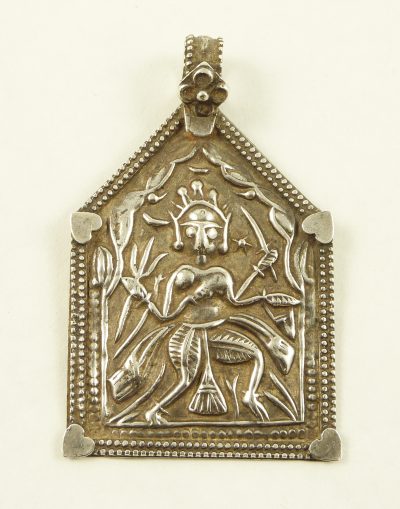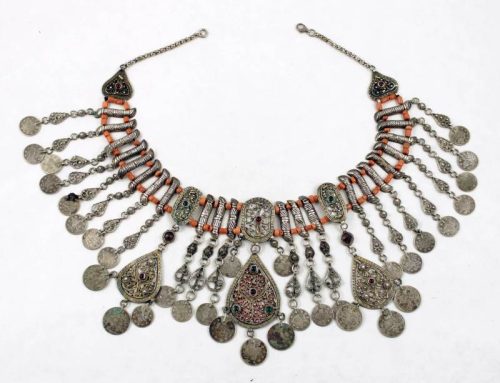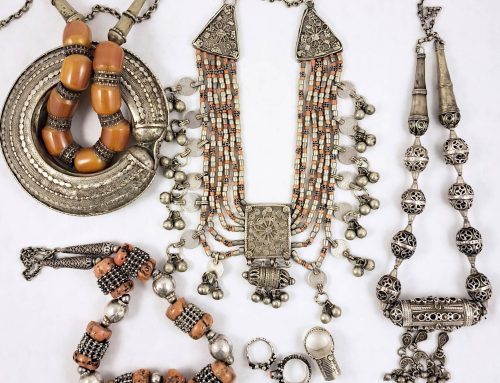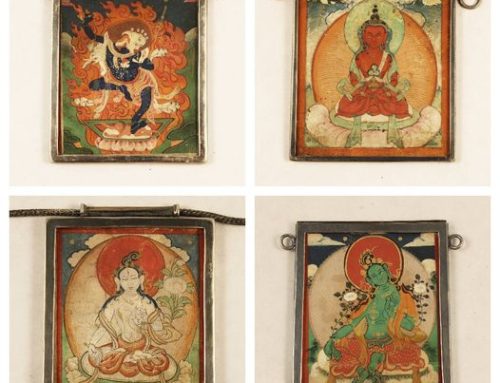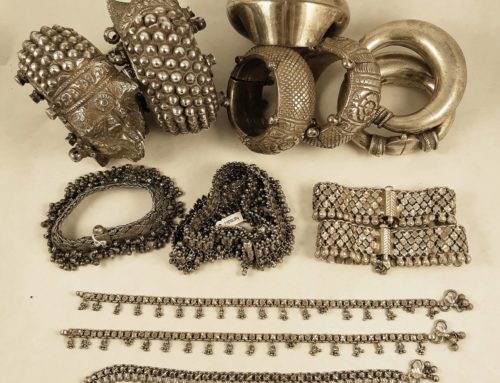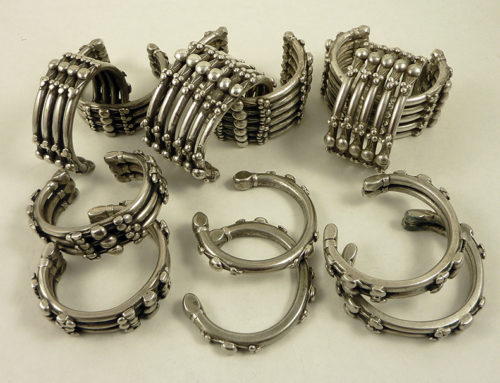Indian amulets
Amulets were worn in India already in pre-historic times. The earliest evidence appears in the Vedas which often mention the use of amulets called “mani” which means jewel. Later on, (still now) the amulets are called “kavacha” (armour).
Amulets act as energy-loaded items which can effectively make the threats harmless and thereby protect the wearer.
There is a wide variety of amulets in India. Formerly, and to a great extend still today, practically all body ornaments are worn for a protective purpose and are, in fact, considered to be a form of amulet.
They can be worn on any part of the body, although they are usually placed close to the area that has to be protected, especially body holes, to avoid bad spirits entering the body.
To preserve their portent power, they might be hidden within clothing or hats, turbans, or headgear.
Hindu plaque amulets
Hindu plaque amulets are more common in Rajasthan, Gujarat, northern India, and Maharashtra. Amulets are acquired in connection to important periods of life like birth, name giving, or marriage.
Before the amulet can fulfill its protective function, it must be consecrated in a ceremony performed by a priest or shaman.
After the consecration, the contact with the body is already considered worshipping, but a daily puja can also be performed on the amulet.
To make an amulet, the buyer first choose which deity he/she wants it to depict, depending on personal, family, or ethnic group preferences. According to the budget, he/she agrees with the jeweler on shape and weight. This is very important and will determine if the amulet will be made of gold (wealthy customers) or made of a very thin layer of silver (for customers with lower means).
Some specialists stamp-die all the plaque amulets and provide them to all the jewelers of the neighborhood. The process involves a brass-cast mold, a lead plate (to mitigate the hammer hits), and a sheet of silver. After hitting the silver sheet with a hammer, the image that was on the mold shows on the reverse.
Indian amulets types:
Depending on what is expected from the amulets, there are different types:
- Amulets with prophylactic protection: They shall help against disease or mishaps which may occur in the future or which are particularly feared by the wearer
- Amulets with medical function are believed to heal an existent disease. They can be given during a healing celebration. Pregnant women and children are particularly vulnerable and wear amulets to repel disease-demons and avoid miscarriage.
- Reconciling amulets, offered to a god to appease them and gain its mercy.
- Amulets to reach harmony, order, and happiness in life. There are amulets for happiness, manhood and to protect material property like land, house, cattle, or jewelry.
Meaning of the Indian amulets shape
The shape of the amulets is also important and can have different meanings:
- Square or rectangle: symbolizes house and farm
- Pointed pentagon: symbolizes a temple
- Round: means a mandala, that is not entered by evil spirits because it is dreaded by them
- Oval shape pointing downwards: symbolizes the yoni, the female sexual organ
- Arrow shape: invisible enemies shall be hit by the arrow
- Tiger claws: the strength of the animal is transferred to the amulet through the shape.
Hindu deities represented on amulets
Which deity or content is depicted on the amulet depends on the individual needs, the family and the group or region. Frequently a family deity is chosen or an inherited deity of the ancestors. A single person can choose a male or female deity in whom he or she has special faith.
Most popular deities on plaque amulets:
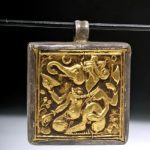
Ganesh: god of science and traders, he protects the house and land from damage. He is one of the most popular ad well-known deities in the Indian pantheon.
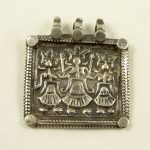
“Ahoi Mata” pendant in silver from Himachal Pradesh representing mother goddess.
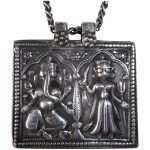
Information gathered from:
“Traditional jewelry of India”, Untracht, Oppi, Harry N. Abrams. Inc publishers, 1997
“Indian Folk jewellery”, Ganguly, Waltraud, B.R. Publishing Corporation, 2015




